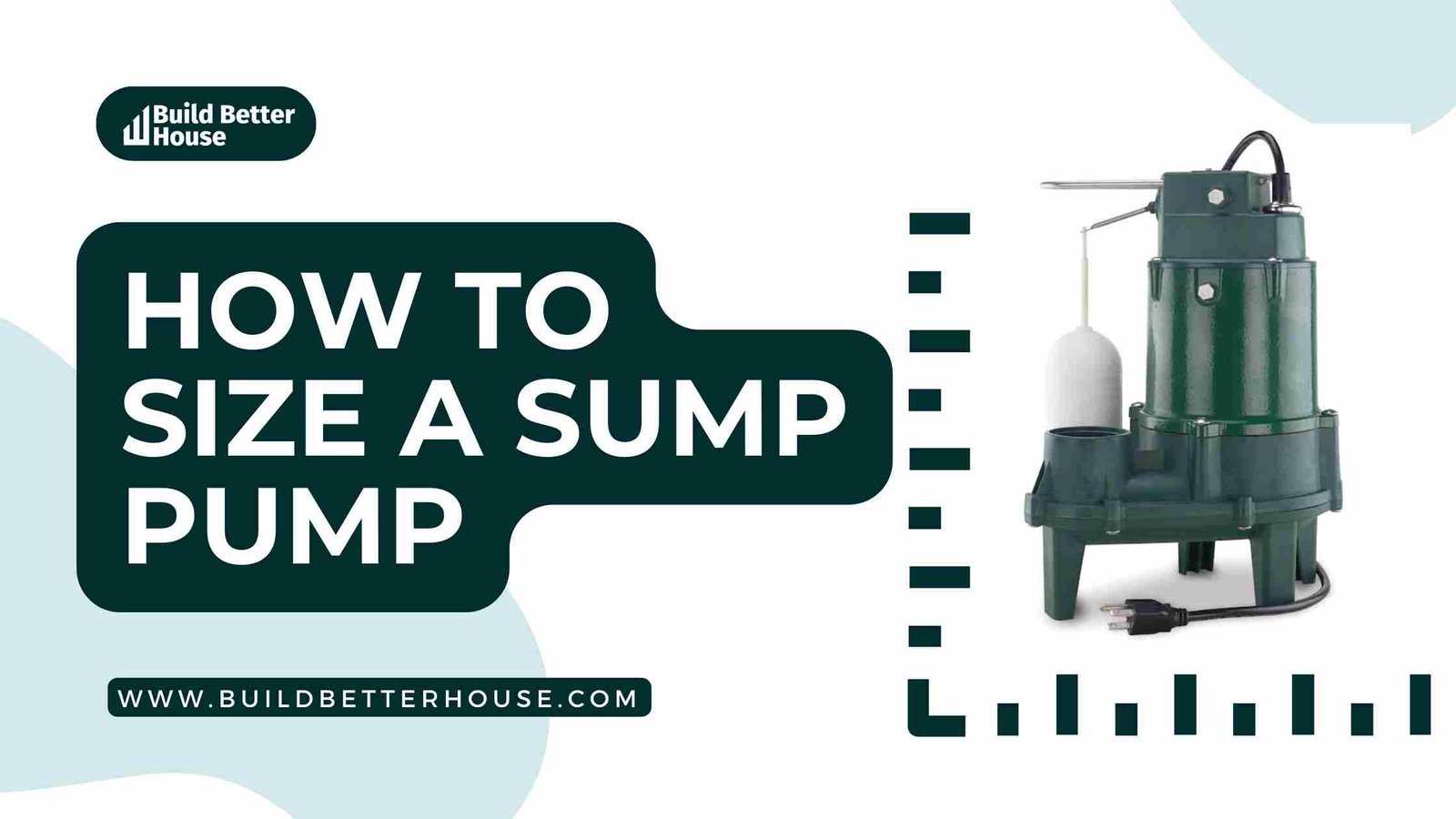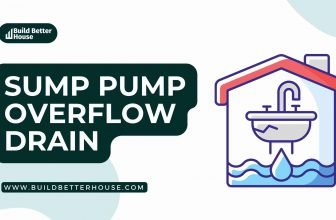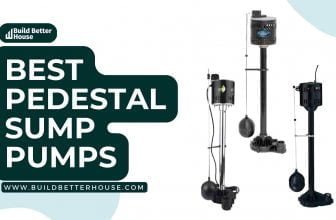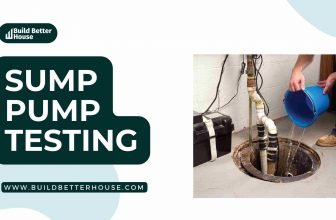How to Size a Sump Pump: Comprehensive Guide for Homeowners

Choosing the right size sump pump is crucial since an overly powerful pump may burn out if used in a small basin, while a weak motor may result in flooding during heavy rain. In this article, you will learn how to size a sump pump.
A sump pump may be vitally important if you live near a significant body of water or in an area where it rains frequently. This pump helps get extra water out of your house and to a secure place. You can only safeguard your home if you have the correct sump pump size.
Every home has a distinct design, so you must consider your home’s size to find the right sump pump size. Let’s begin with how to size a sump pump.
Sump Pump Sizing Chart
Picking the correct horsepower and pump should be simpler than it sounds, and it is essential to remember that bigger isn’t always better when it comes to how to size a sump pump.
When deciding how to size a sump pump, consider the head height, maximum flow rate, and discharge line lengths.
Use our sizing chart to assist you in selecting the correct pump if you already know the head height and maximum gallons per hour.
| Pit Diameter | Gallons of Water |
| 60” | 12 |
| 72” | 17.5 |
| 24” | 2 |
| 30” | 3 |
| 36” | 4 |
| 42” | 6 |
| 48” | 7.5 |
How To Size A Sump Pump?
Choosing a sump pump that’s the right size is crucial because if you select one with a motor that’s too weak, it won’t be able to expel water from your basement. Conversely, choosing one that’s too powerful might drain the basin too quickly and burn out the motor.
Here’s how to size a sump pump based on your home’s unique structure:
Estimate Your Capacity Needs
You must first calculate the capacity to know how to size a sump pump. The capacity indicates how many liters of water are removed from the sump pump in one hour.
If the sump pump has a lower capacity than needed, it will eject water more slowly than it enters. In other words, the pump will remove less water than expected.
You must have a measuring tape and a calculator for this step. It’s simple to understand and requires a little arithmetic.
You must do this on a rainy and wet day to get started. Let the sump pump run until the float switch deactivates, allowing the water to recede. Unplug the sump pump for one minute to allow the water to rise back up.
This method measures the amount of water collected in the sump pit once the sump pump is off. The diameter of the sump pit will be 18 inches in most cases. To account for the water volume, measure yours.
Every inch of water collected will correspond to approximately one gallon of water overall. To determine how much water will collect in one hour, multiply the number of inches accumulated by 60.
To get the gallons per hour you need, multiply that by 1.5. This will give you extra wiggle room in case it rains heavily.
- Formula for an 18-inch diameter sump pit: 1 x Water Accumulation x 60 x 1.5 = Estimated GPH
- Formula for a 24-inch diameter sump pit: 2 x Water Accumulation x 60 x 1.5 = Estimated GPH
Pick the Right Horsepower
Sump pumps come in a variety of horsepower levels. You should carefully assess the motor’s power in addition to its capacity. A ½ horsepower or ¾ horsepower motor is typically sufficient for a regular household.
If you frequently experience flooding, you may want to purchase a ½ horsepower or ¾ horsepower sump pump rather than a ⅓ horsepower one. When learning how to size a sump pump, it is always advisable to buy a motor that produces more than it consumes.
Look at the Vertical Lift or Static Head
The vertical lift, also known as the static head, is the amount of water the pump must lift through the discharge pipe. The longer the distance between these points, the more complex the pump must work.
You can determine your house’s vertical space by measuring where the water enters the pump and where the discharge pipe transitions horizontally.
Consider the Friction Head
Water passing through a discharge pipe creates friction as it rubs against its sides.
A water pump must be able to overcome the friction that slows the flow of water down. The more narrow the pipe, the more friction it produces.
If you believe that friction head is an issue with your system, you may request an estimate. Add the friction head and the static head together to learn how to size a sump pump with a capacity suited for your total dynamic head.
Factors Affecting The Size Of A Sump Pump
While learning how to size a sump pump, it’s critical to know the factors affecting the size of a sump pump.
Several factors determine the correct size sump pump. Choosing the right sump pump involves figuring out the horizontal and vertical distances the motor will have to move water.
You’ll need a more robust and higher horsepower pump if your drain system has more piping, especially vertical piping.
Vertical Piping
A vertical drain line requires a more powerful pump to battle gravity. The higher the head height, the more powerful the motor is required.
While learning how to size a sump pump, remember if the pump needs more power, water will not be able to exit the basement, resulting in a flood.
Horizontal Piping
Horizontal piping needs less power from the pump to drive the water out. The friction and space of discharge pipes play an essential role in how to size a sump pump.
You may need horizontal piping to remove moisture from your basement, but a well-thought-out strategy can minimize piping.
⅓ vs ½ HP Sump Pump
There are two common-size sump pumps, 1/3 and 1/2 HP. Remember that both have advantages and disadvantages when learning how to size a sump pump.
- 1/3 HP Pumps
1/3 horsepower pumps can efficiently handle low flow rates and head heights. They consume less energy and produce less noise than 1/2 horsepower pumps, but they may not be able to rinse high flow-rate areas sufficiently.
- 1/2 HP Pumps
If you require a pump that can move huge quantities of water and elevate them to high vertical head levels, then a 1/2 horsepower sump pump is an excellent choice. The only disadvantage is that if the motor is too powerful, it may burn out prematurely.
Wrapping Up
To determine the right sump pump size, you must choose the size of your basement and house, select the required horsepower, consider the vertical lift, and assess the friction coefficient.
Capacities and horsepower are the most critical of these four issues. You won’t need to consider a typical-sized house’s vertical lift or friction coefficient when determining how to size a sump pump.
Sump pumps require a little maintenance. Maintain your sump pump after a short period of use; it may weaken.







I had two kittens get stuck in the sump tank and they unfortunately both drowned…. devastated and in the end I have the cord coming from the submersible switch needs fixed …. it being an inlet for plug and the outlet as well w/ the switch combined ???